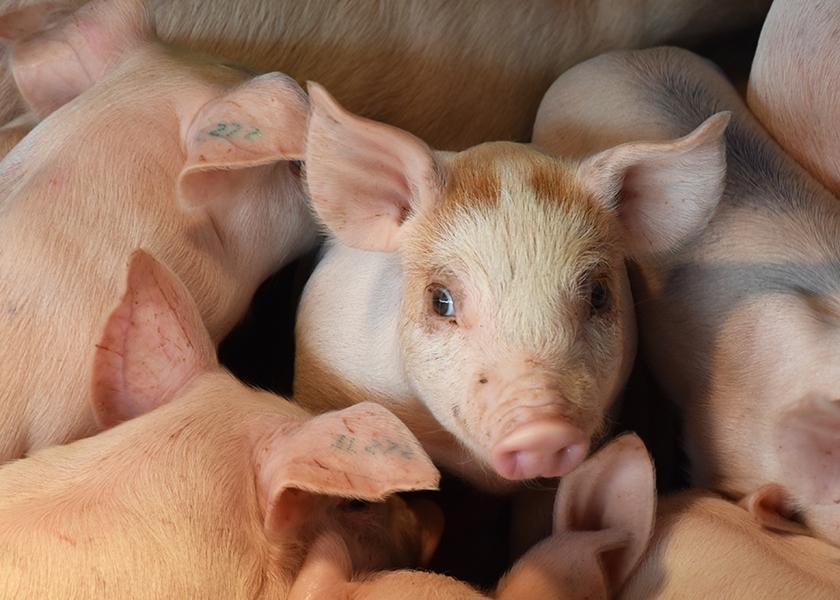The Real Outcomes of the Swine Health Information Center in 2022

“The outcomes from the Swine Health information Center (SHIC) in 2022 are a little like motherhood and apple pie,” says Paul Sundberg, SHIC executive director. In other words, no one can question its impact.
Looking back on a busy year, he’s the first to point out that the progress SHIC has made to safeguard swine health through prevention, preparedness and response efforts are in no small part thanks to the National Pork Board who made the decision to keep SHIC up and running by investing $15 million in it through 2027.
“Having that support from the Pork Checkoff enabled SHIC to expand and hire an associate director and do more work in 2022,” he says.
It’s work with actionable outcomes, he adds. SHIC’s 2022 Progress Report, presented to and accepted by the board of directors of the National Pork Board on Dec. 15, details steps taken in 2022 to achieve the mission of safeguarding the health of the U.S. swine herd.
Data Analysis Leads to Breakthrough
Data analysis helped SHIC change direction with its new wean-to-harvest biosecurity program mid-year. An outbreak of Actinobacillus pleuropneumoniae (APP) in the Midwest drove Sundberg and Megan Niederwerder, SHIC associate director, to review the data more closely. In doing so, they saw that data confirmed the cycle was happening with porcine reproductive and respiratory syndrome (PRRS), too. That analysis showed outbreaks of PRRS were happening with regularity on finishing floors a month to two months before they happened in breeding herds.
“That harkens me back to the pseudorabies eradication days,” he says. “We had outbreaks of pseudorabies on finishing floors that would continue to happen and the breeding herds in those areas would then break with pseudorabies. Then, we'd have to depopulate them. It was a lesson that if we don't control finishing floors, we are going to keep doing this circle over and over again.”
A project led by Kate Dion, former graduate student at Iowa State University, investigated PRRS and porcine epidemic diarrhea (PED) status of pigs coming from clean breeding herds going to finishing floors and checking their status after they're placed on the finishing floor.
“The research showed they could be clean and not carrying PRRS or PED when going to the finishing floor but become infected on the finishing floor. So, that increases risk of it cycling back again to the breeding herd,” he explains.
This information, combined with discussions with state and federal animal health officials and the packing industry about trucking and African swine fever (ASF) and other pathogens’ transmission risk, were brought to the SHIC board of directors in June. Sundberg and Niederwerder brought the data to the board with the request to change what they were doing because of these vulnerabilities identified in nursery, finishing and transport biosecurity. That led to approval to create the wean-to-harvest biosecurity program, an outcome supported by the addition of Niederwerder.
“This is an example of analyzing industry data, being nimble and willing to change. SHIC changed its direction in quick response to an identified producer need,” he says.
International Monitoring Spurs Action
SHIC’s international monitoring brought to SHIC’s attention an outbreak of Japanese encephalitis virus (JEV) in Australia early in 2022. Australia’s pork producers have lost an estimated 6% to 10% of their production due to this devastating virus spread predominantly by mosquitoes.
“It’s a tough one, because we may never get it in the U.S. But if we don't pay attention to it, it's to our own peril,” Sundberg says. “We didn't pay attention to PED when we knew it was going on in China. We've got to pay attention to JEV now and try to prevent it, or at least be prepared to respond.”
Knowing that the U.S. pork industry can’t expect the virus to wait on preparedness efforts, SHIC prioritized the work to address it urgently. SHIC brought together Australian producers, animal and public health officials and researchers with animal and public health regulatory agencies of the USDA and CDC and U.S. researchers to see what lessons could be learned from the Australian experience to help prevent JEV from getting to the U.S. or, if it does get in, to be prepared to respond quickly.
“JEV is our potential ‘next PED,’ but worse because the virus can infect both pigs and people,” Sundberg says. “We may be able to stop JEV from arriving in the U.S., or it may get here this week.”
In addition to funding a literature review and risk assessment updates of JEV, SHIC also initiated discussions with USDA about response plans needed.
“We're working with USDA on trying to get an updated, realistic response plan,” he adds. “In addition, Dr. Niederwerder has put together a list of research priorities for JEV and we're going to put a budget to that. In January, we're going to provide it to the board of directors and say, ‘If we get it but we aren't prepared for it, then we're going to be chasing from behind.’”
Research Aids in Decision-Making
The complete 2022 Progress Report is available here. Sundberg says the 60-page document has an executive summary in front that highlights activities and progress.
“You don’t have to read all 60 pages, but the information is there if there are pieces you want to dig deeper into,” he points out.
SHIC’s efforts are helping producers make important decisions. For Sundberg, that’s the highest praise.
“SHIC has had an amazing amount of interest this year,” he says. “On our website, the number of hits that we've had from U.S. producers and veterinarians has doubled from 2021 to 2022. Around the world, it’s more than doubled. We're seeing some success by providing people with information that is practical, implementable and makes a difference.”
More from Farm Journal's PORK:
APP Serotype 15: A Bizarre Situation, Swine Expert Says







